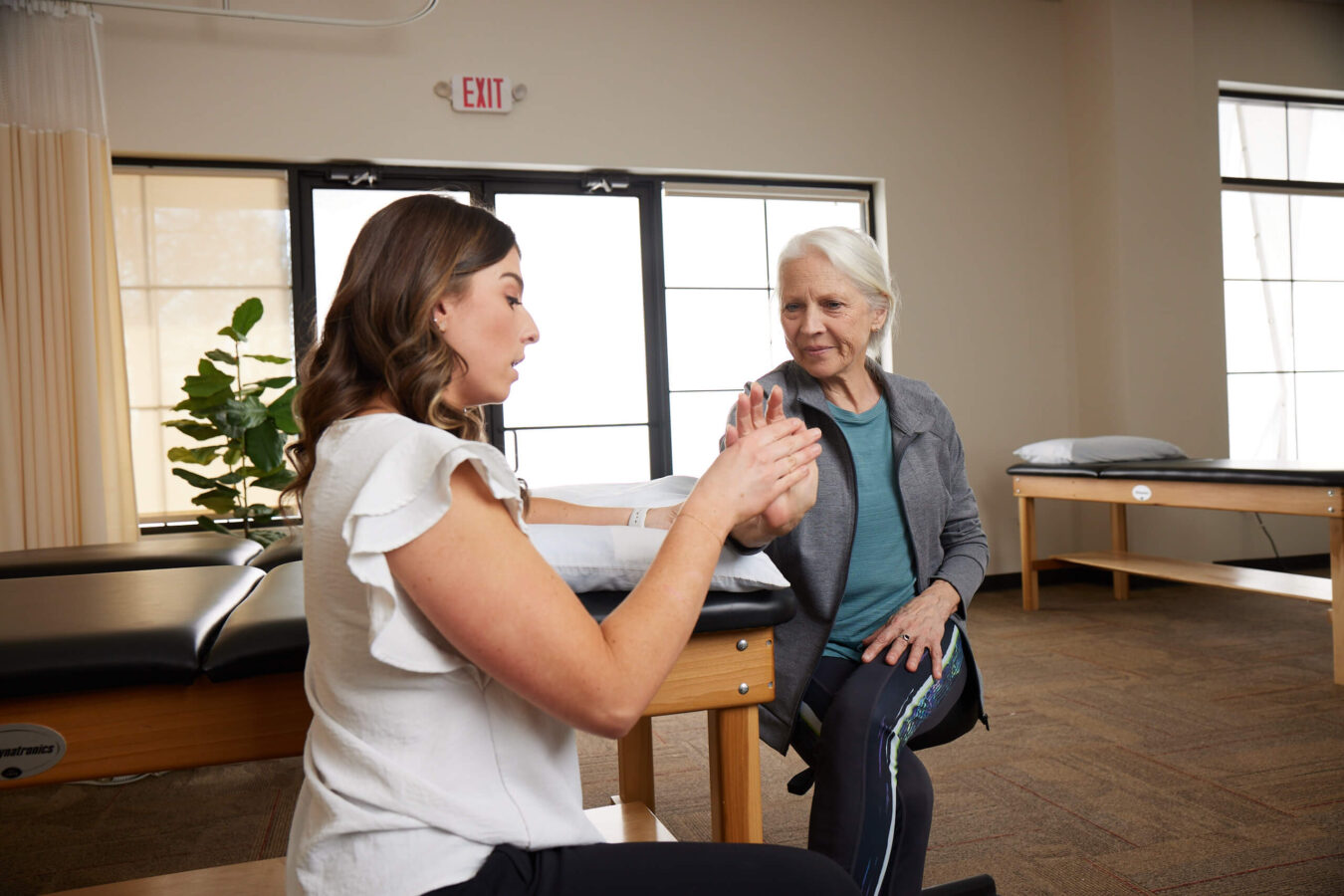
Medically reviewed by Misty Seidenburg
Wrist pain can be caused by trauma to the hand, repetitive stress, or systemic conditions that inflame the joints. The location, duration, and type of pain all provide important clues about what is happening in the body. Here, we provide an overview of what different types of wrist pain may be a sign of.
The wrist is the joint located where the hand and forearm connect. It contains eight small bones that connect the five hand bones to the two bones of the forearm (the radius and ulna.)
Ulnar wrist pain is pain along the pinkie side of the wrist. It is often experienced as pain when twisting the wrist and forearm, like when you go to open the lid off a jar. It can be felt when the hand is at rest and with motion. Decreased grip strength, limited motion, and popping when rotating the wrist may also occur with ulnar pain.
Some causes of ulnar pain include wrist fractures, arthritis, sprains, and tendonitis. Ulnar impaction syndrome is another possible source of ulnar pain. With this condition, the ulna bone is longer than the radius. Over time, this causes it to rub against the smaller bones, causing degeneration of the cartilage that stabilizes the structures on the ulnar side of the wrist.
Pain when bending the wrist forward and backward, or during side-to-side movements can be indicative of a wrist sprain. Sprained wrist pain is typically described as either a throbbing, sharp pain or a dull ache that comes and goes intermittently.
Signs of a sprained wrist include:
A cumulative strain injury is another possible cause of wrist pain while bending. Over time with repetitive stress, the wrist extensor muscles at the back of the forearm, and the wrist flexor muscles along the front of the forearm become damaged, causing pain and limited range of motion.
Wrist pain when gripping and grasping is commonly associated with several injuries and conditions.
It can be associated with irritation of the muscles and connective tissues near the wrist linked to a strain or tendonitis. Someone with a wrist strain or tendonitis may also have difficulty tolerating loads (weight) on the wrist.
Carpal tunnel syndrome is another condition that weakens the thumb muscle and makes it difficult to grasp objects. Carpal tunnel syndrome affects approximately 3-5% of adults, many whom spend extended periods of time typing on a keyboard and doing other repetitive hand and wrist motions that place added stress on the median nerve.
The early signs of carpal tunnel syndrome are pain and/or tingling in the thumb and first two fingers as well as hand and wrist numbness, often at night. If you spend a lot of time texting, typing, or bending the wrist for other activities, hand and wrist stretches can help relax and reduce pressure on the hand and wrist.
As mentioned above, pain in the thumb and wrist is an early symptom of carpal tunnel syndrome. As this condition progresses, mild thumb pain may progress to a burning sensation that travels up into the forearm and reaches the shoulder.
Another overuse injury that causes thumb pain is De Quervain’s Tenosynovitis, also known as Mommy’s Thumb. This involves irritation and inflammation of the two tendons that run along the back of the thumb. Although this condition can be quite painful, it is generally resolved with activity modification and hands-on manual therapy.
Many wrist injuries and conditions cause pain and other symptoms in different parts of the hand, wrist, and forearm. Let us revisit some we have already discussed, along with a few others that cause pain throughout the wrist and hand.
Wrist pain can be caused by:
Keep in mind: the information provided here is not intended to diagnose your condition. See your healthcare provider for an accurate diagnosis and schedule an appointment with your physical therapist to create your custom treatment plan for wrist pain.
Wrist pain and injuries can often be treated with conservative, nonsurgical methods. Physical therapy is beneficial for wrist pain associated with sprains, strains, overuse injuries, and several of the conditions mentioned here.
The goal of physical therapy is to help you achieve pain relief and improve your strength, flexibility, and range of motion in the wrist and hand. To achieve this, licensed physical therapists combine targeted stretching and strengthening exercises with hands-on manual therapy and other evidence-based modalities for optimal results.
We use our wrists for nearly all our daily tasks. These movements should not be painful. Find a physical therapy clinic near you.